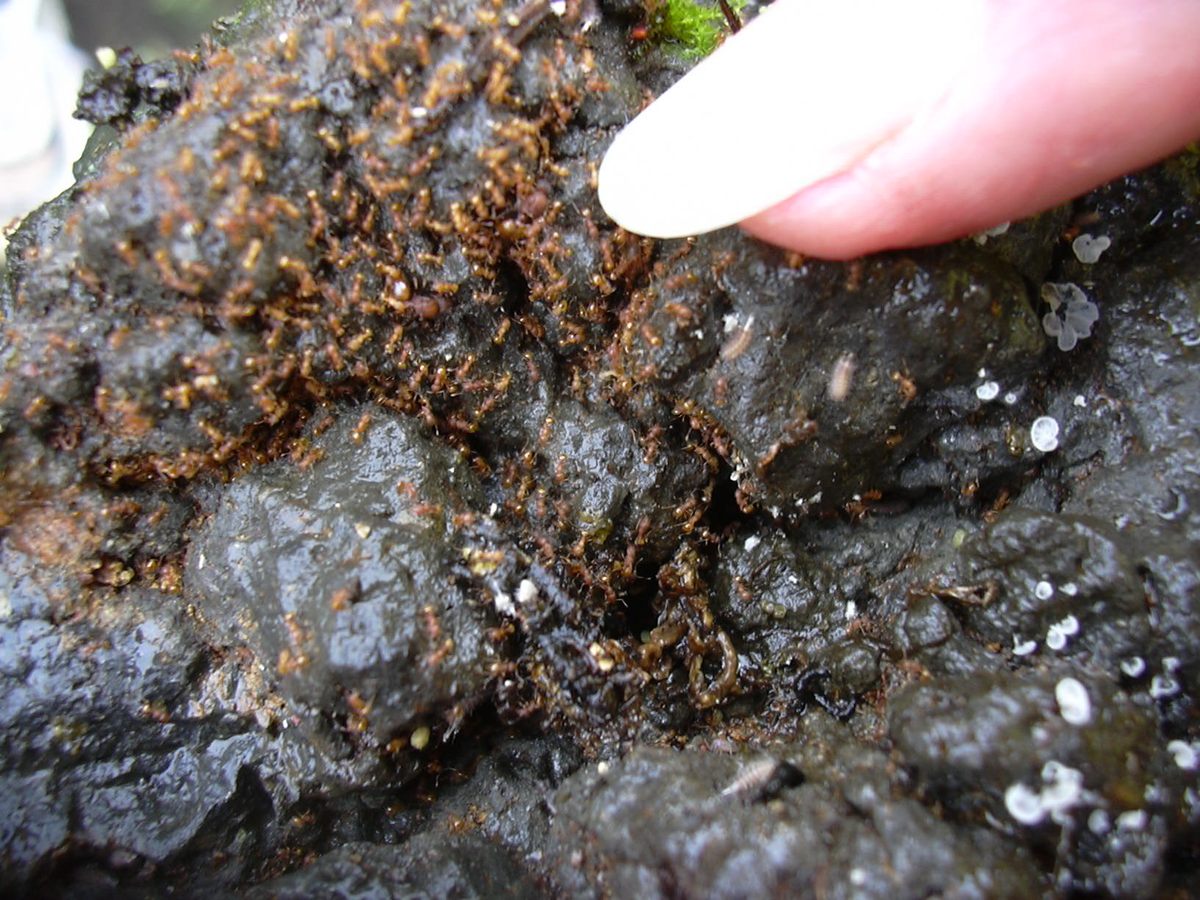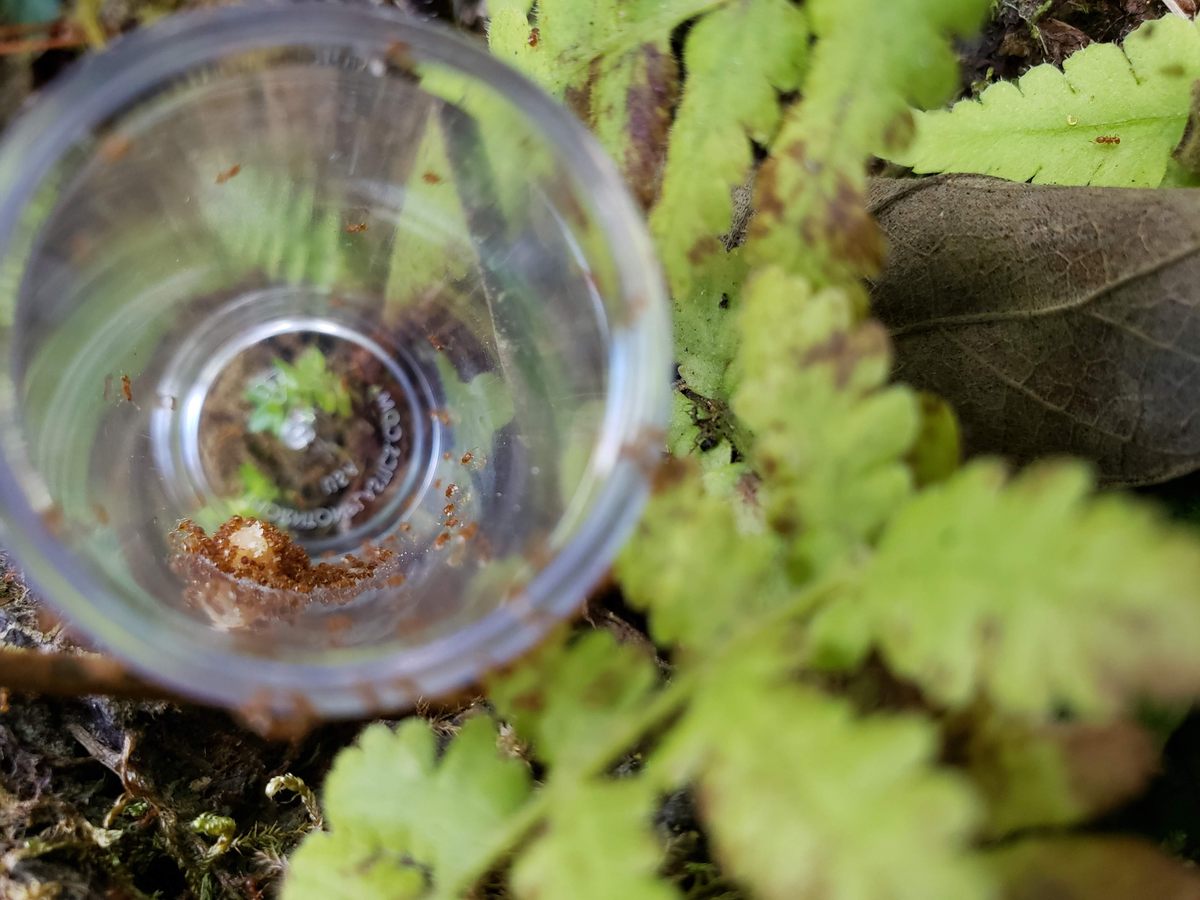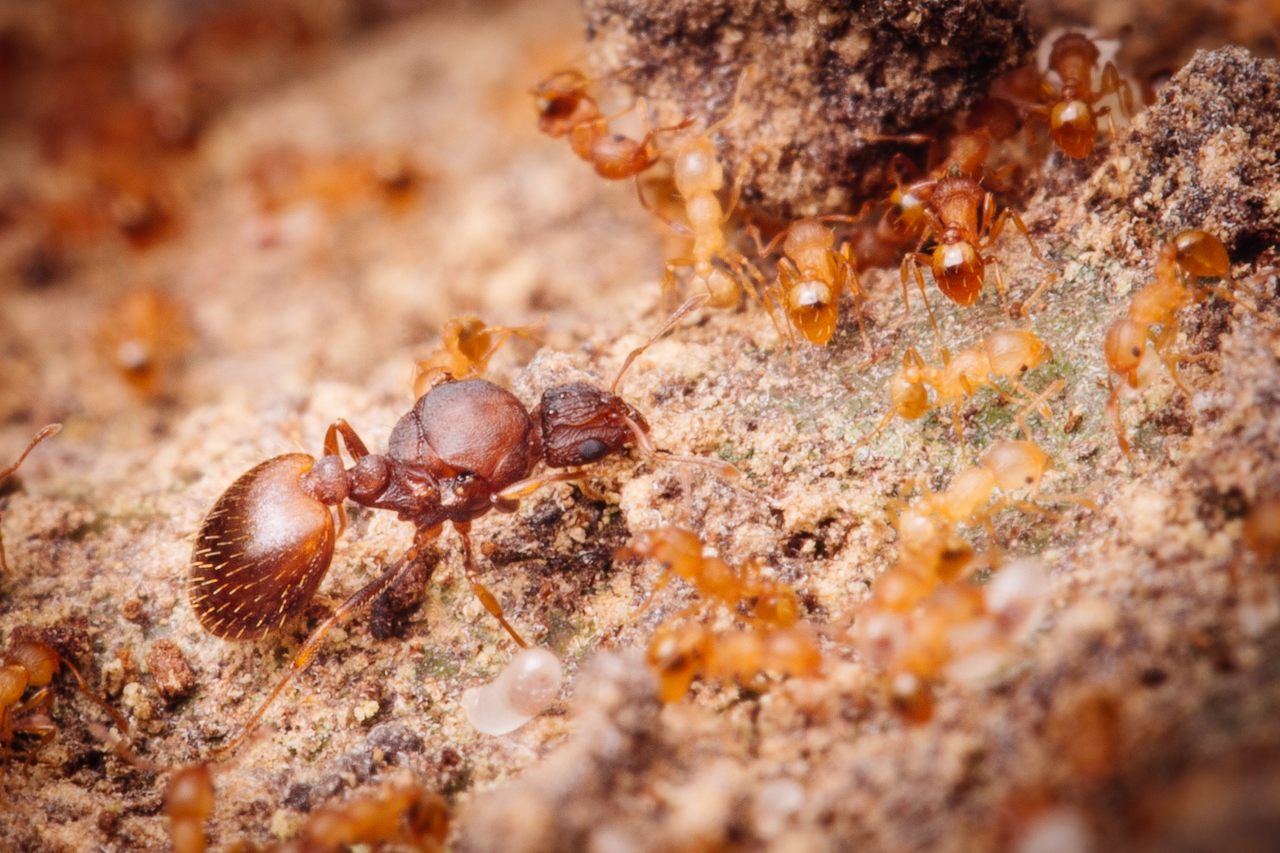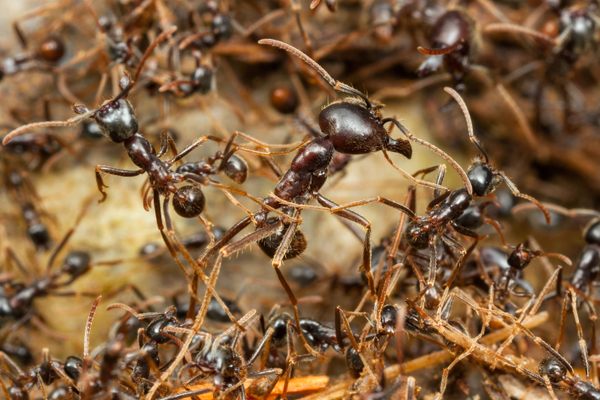Hawai’i Tackles Invasive Little Fire Ants With Vigilance, Slingshots, and Gooey ‘Sputter’
Across the archipelago, scientists and citizens are uniting against the tiny terrors, deploying an arsenal of creative weapons.
On any given day, Wailua River State Park in eastern Kauai is jam-packed with tourists. They fill parking lots and hiking trails and riverboat cruises, eager to experience the 1,100-acre preserve’s cultural and geological treasures, everything from temple ruins to the 151-foot Opaekaa Falls. But in October, officials announced a discovery that could put a serious crimp in the park’s popularity. After all, no one wants to spend their vacation being showered with thousands of tiny stinging insects.
It seems an uninvited guest has found its way to the park: the dreaded little fire ant (Wasmannia auropunctata). A native of Central and South America, the ant has been named one of the “world’s worst invasive species” by the International Union for Conservation of Nature.
Surveys are underway to measure the size of the infestation, according to Haylin Chock, outreach specialist at Kuai Invasive Species Committee (KISC), an organization dedicated to preventing and controlling invasive pests on the island. Initial estimates are 13 to 35 acres, but because of the area’s rugged landscape and the ants’ diminutive size, getting an accurate picture of the spread takes some doing. “The terrain is really difficult,” Chock says. “Our team is needing to repel in some areas.”
Scaling basalt cliffs to hunt down insects the size of a sesame seed may seem like an overreaction, but the little fire ant is a big problem for humans and animals alike. In fact, the last known infestation on Kauai was discovered in 2020, when a gang of blind feral cats tipped off the KISC team that little fire ants might be in the area. The ants are notorious for stinging the eyes of pets and wildlife, causing milky corneas and eventually blindness. Getting rid of the insects also requires an outsized effort that can include slingshots, helicopters, and barrels of peanut butter.

On the Big Island, where the little fire ant is widespread, impacts to the ecosystem have been devastating. Little fire ants are cutthroat assassins. “They’re the most aggressive of all the ants we have in Hawaiʻi,” says Heather Forester, extension specialist with the Hawaiʻi Ant Lab (HAL). “When little fire ants move in, they quickly outnumber all the other ants and literally rip them apart. They push everybody out.” That includes native and beneficial insects. These murderous mini-menaces also infiltrate hatching eggs to feed on the baby birds and turtles inside, and can decimate colonies of bees by devouring their larvae.
Little fire ants are a big threat to agriculture, including subsistence farming, a traditional way of life for many on the islands. The ants love the sugary secretions produced by aphids and mealy worms, and act like bodyguards for those pests, defending them against predators while they chew through valuable crops. Unlike other ants, little fire ants don’t build a single nest on the ground. Instead they construct multiple homes—sometimes in massive supercolonies—in compost, leaf litter, logs, trees, and other material. This makes work precarious for gardeners and farm workers.
The ants’ painful sting—as well as their ability to sting multiple times—has earned them the moniker “electric ants” in some areas. Forester says the ants have had a serious effect on the quality of life wherever they’re present, turning playgrounds, picnics, and evening strolls into risky undertakings.
Across the islands, a coalition consisting of HAL, and local, state, and federal organizations has mobilized to fight infestations. Much of the battle is simply finding the teeny terrors. “Our messaging is ‘find them before they find you,’” says Forester.

Little fire ants spread by hitchhiking in cargo such as potted plants, produce, and building materials. They first arrived on the Big Island in 1999, likely lurking in nursery plants shipped from Florida. Because it only takes a small fragment of a colony—a queen and a few workers—to establish a new population, locating even the tiniest crew of stowaways is paramount.
The Hawaiʻi Department of Agriculture monitors airports and seaports, inspecting cargo coming into and moving around the islands for invasive species; HAL also conducts regular inspections of adjacent properties. Little fire ants love fat, so the HAL team leaves out vials of spam and peanut butter (“We just call it ‘sputter,’” says Forester) to attract any W. auropunctata in the area.
Peanut butter is integral to home testing, too. Throughout Hawaiʻi, people can request testing kits, which come with popsicle sticks, a sealable bag, and an envelope addressed to the nearest ant-ID specialists. All the resident has to supply is peanut butter—a thin smear will lure any nearby little fire ants in under an hour. After popping the ants in the freezer to kill them, residents send them in for identification.
On the Big Island, on average, a mailed-in kit tests positive for little fire ants a few times a week. HAL helps affected homeowners and businesses develop treatment plans, which usually involve setting out bait laced with insect growth inhibitors—essentially, ant birth control. Effective treatment requires multiple rounds of bait and years of follow-up surveys to make sure the ants are gone.

Little fire ant infestations can spread quietly for years without being detected. So anti-ant crusaders encourage regular testing with year-round social media campaigns and school presentations. They’ve even designated October as “Stop the Ant” month statewide. On Kauai, a more rural island, Chock says KISC relies on radio ads and the so-called “coconut wireless” of neighbors telling neighbors about the dangers of the little fire ant.
Outreach is key across the islands. “Most of our infestations have been discovered because of public reporting,” says Brooke Mahnken, Invasive Ant Supervisor for the Maui Invasive Species Committee (MISC); the island’s first infestation was found in 2009 thanks to a student who’d recently attended a school presentation about the ants.
The most challenging infestation on that island to date was discovered in 2014 by a MISC crew as they combed the jungle outside Nahiku on Maui’s northeast coast, looking for another invasive species, the miconia tree. Instead, “they just got totally destroyed by little fire ants,” remembers Mahnken.
Establishing the extent of the infestation proved just as perilous thanks to the site’s steep drop-offs and dense, nearly impassable vegetation—not to mention millions of stinging ants.

“We had folks that were out there having to army crawl,” says Serena Fukushima, MISC’s public relations and education specialist. “Folks [were] essentially doing acrobatics and limbo.” It took a volunteer team of 30 more than three weeks to complete the surveys. Fukushima says that in addition to the difficult landscape, the sheer size of the infestation—about 175 acres—and the height of the canopy also posed obstacles for treatment.
MISC has gone after ant colonies high off the ground before, working with arborists to launch balls of baited peanut butter into the crowns of towering palms. In October 2019, MISC began a new aerial assault, treating the Nahiku site from a helicopter with specially formulated bait that has the consistency of pancake batter, says Mahnken.
So far, the novel technique appears to be working. In October, only a handful of 5,000 samples taken from the area contained little fire ants. MISC will continue the helicopter treatments through winter 2023. Mahnken says that MISC has shared their hard-won expertise with other Pacific islands and is standing by to lend a hand to their compatriots in Kauai, should the infestation at Wailua State Park necessitate aerial treatment.
“We definitely want to help everybody get rid of their little fire ants,” he says. “Even though we’re on separate islands, we’re all in this together.”

































Follow us on Twitter to get the latest on the world's hidden wonders.
Like us on Facebook to get the latest on the world's hidden wonders.
Follow us on Twitter Like us on Facebook